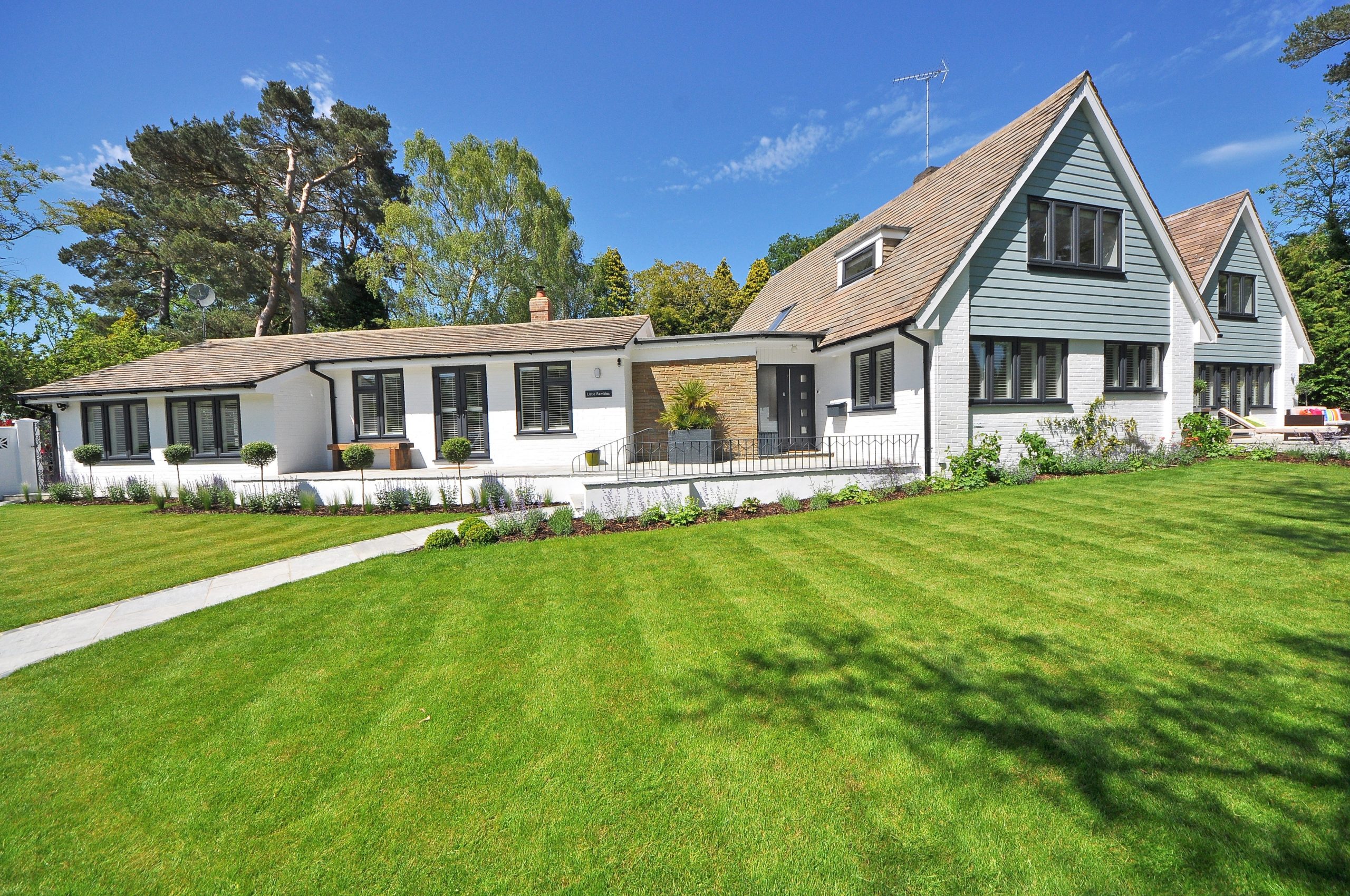If you like gardening but lack room, you may find it difficult to complete landscaping tasks in your backyard. However, much as individuals create miniature gardens on their balconies, you can maximise and make the most of a smaller backyard.
Special designs for smaller areas are still available. This article discusses how to create a small landscaping with limited area in the backyard. Continue reading for some tips on how to maximise space by landscaping a small backyard in Melbourne.
Design Suggestions for Your Small Backyard or Garden
- Make a few focal points
The absence of vast vistas is a significant difficulty when constructing smaller areas. It’s difficult to establish a focal point in a small room, and even if you could, it wouldn’t appear appealing.
Creating many yet small focus points is a good option. For example, you may make the route a primary focus point to rapidly grab the attention of visitors. You may also split the garden to give the appearance of a bigger area.
The look may also be combined with tall plants, foundations, and sculptures. Distribute them evenly across the garden to minimise congestion.
- Take into account every available inch
If your garden is larger, you may disregard specific areas without concern. However, in smaller places, you must carefully consider every available inch.
In small gardens, it is quite simple to overlook mistakes and omissions. As a result, while developing a small garden, use caution.
Make a detailed outline detailing the available area before you create or plant. Having a thorough strategy and plan in place ahead of time can help you maximise the limited area available.
- Make Use of High-Quality Materials
There are several materials available on the market. You can easily locate inventive ceramics and unusual stones to remodel and personalise your modest yard.
Because you have a smaller backyard, you will require less resources. This will save you money.
As a result, take advantage of this and get high-quality landscaping materials, even if they are more expensive. You will only need a few of them, so you will not spend as much as you would on a larger landscape. You may also engage a specialised landscaping firm to perform all of the work for you.
4.Construct a Usable Space
As previously said, you cannot afford to waste even a single inch of the limited available area.
As a result, you should consider the objective of your garden. For example, if you want to perform outside eating, place a dining table in the area.
If you like resting in your backyard, consider a sitting area or a fire pit. Determine the primary emphasis or function of each region of the garden. This will, however, be determined by the amount of accessible space.
- Vertical Landscaping
Consider vertical landscaping as another excellent option for adorning a small garden. There are several DIY vertical gardening options available, and you can always find one that works for you.
Make your garden more fascinating by using a variety of plants for vertical landscaping. Plant hangers and hung pots may also be used to add extra plants vertically.
- Always Use Bright Colours
Having a small garden makes it simple to incorporate colour. Choose vibrant colours that will bring life to your modest garden. For the outdoor sitting arrangements, you may utilise some throw pillows or cushions.
You may also grow flowers that blossom in bright colours. However, it is critical to stick to a single colour theme since using too many colours might be exhausting.
You’ve now lead some fundamental guidelines for gardening a small backyard. Let us now look at little backyard landscaping ideas.
Backyard Landscaping Ideas for a Small Yard
- Make Use of Oversized Pots
Planting in larger pots is great for a small yard. To get a lush look, cultivate plants in large pots. Consider placing the pots up next to each other to create a wall or to divide various areas of your garden.
Choose terra cotta pots if you want a more elegant aesthetic. If you don’t mind a generic appearance, go with plastic pots. Another alternative is to use wooden planter boxes. They will give a touch of class to your yard.
- Combine various herbs
Planting a variety of herbs is a fantastic idea. Planting various herbs can enhance the appearance of your garden while also providing several health advantages when prepared.
Use a metallic container for growing odd herbs or colourful flowers to get an ancient but sophisticated look.
- Putting in a Birdbath
You may place a birdbath in your garden as a decorative feature rather than feeding birds. However, if you like having birds, you may still use them.
Succulents should be placed in the birdbath. Succulents’ leaves and stems hold water, so a small or shallow birdbath would be ideal.
You may add stones to help the soil retain moisture for extended periods of time. Furthermore, the birdbath will provide a desert theme.
- Make use of Climbers
Climbers are some of the best plants for a small garden. Consideration should be given to vertical positioning for climbers. You might, for example, choose a bougainvillaea.
You will not have to use a complicated trellis. There are various climbing plants with vertical vines that you may utilise.
- Experiment with Different Textures
In small gardens, it is critical to produce visual vibrancy and contract. This may be accomplished by placing plants along the stairwell. Curved pots should be used to plant them.
Use a variety of plant forms. Geranium and agave, for example, would look great grown together.
Vertical foliage may be used with foliage that divides sideways here. This will create a nice texture across the area.
- Make use of Pocket Plants
Pocket plants are an excellent alternative for decorating a small landscape and should not be overlooked. You may hang an old painting on the fence or a wall.
Fill the sections with dirt. Then plant some flowers there. You may use vines or ferns to create a one-of-a-kind look.
Don’t be afraid to express yourself. You may, for example, add some herbs, albeit they don’t look very appealing.
- Utilise Shutters
Shutters are particularly ideal for planting in small spaces. You may simply place two old louvres along the wall. Then, arrange the plants in their respective spaces.
Mosses and succulents are excellent candidates for planting in shutters because they like to flow over, providing an appealing impression.
Succulents, on the other hand, do not thrive in direct sunshine. As a result, if you choose succulents, place them in a shaded location.
- Make use of Pallets
Because of their versatility, pallets are suitable for use in small gardens. Place a pallet vertically and add several clay pots on it.
You may connect and fasten the pots to the pallet using cables, preferably stainless steel cables, and nails.
To prevent smothering the plants, make sure the containers are not too close together. As a result, leave some space between the pots for the plants to develop freely.
- Select Miniatures
Consider using little items, such as a terrarium, to create a fashionable garden. A terrarium is simple to make, yet it has a high-end appearance.
You may also incorporate whatever plant you choose, although African violets, peperomia, ferns, and mosses are perfect.
- A Curved Ivy Garden Fencing
This landscaping concept is extremely intriguing. A curving fence will partly conceal the garden. It manipulates visual perception in order to make a small place look bigger. A curving fence does this by preventing you from seeing the whole garden from a single point.
To view more of the backyard, stroll farther along the curving fence. This will give you the impression that the garden is larger than it is.
- Create Raised Beds
They are an excellent choice for planting in small gardens, particularly when soil conditions are poor or where there is no soil at all.
Herbs and flowers may be planted in the beds. You are allowed to elevate the beds to whatever height you like. Raised beds are perfect for creating a unique appearance in a compact area.
- Plant some trees.
Although it may seem to be a negative idea for a little landscape, it is really beneficial. All you have to do is choose a dwarf variety.
The tree may be planted in a big container. A dwarf species will not grow taller than 5 to 10 feet, making it appropriate for small places.
- Make use of tables and trays
You don’t have to throw away old furniture when you can repurpose it to adorn your yard. Use an old metal table, old pots, metal tubs, or other similar materials in your garden.
They will produce a classic and sophisticated look that will complement other garden features.
Conclusion
All of these landscaping ideas are suitable for small gardens or backyards in Melbourne. They are simple to execute, and you can always repurpose existing objects in your home, such as tubs, pots, and furniture.
This will lower the total cost of landscaping. Always make the most of the little space provided and keep in mind that every inch counts. Finally, You can contact us now to get an amazing outcome, make the design colourful.


